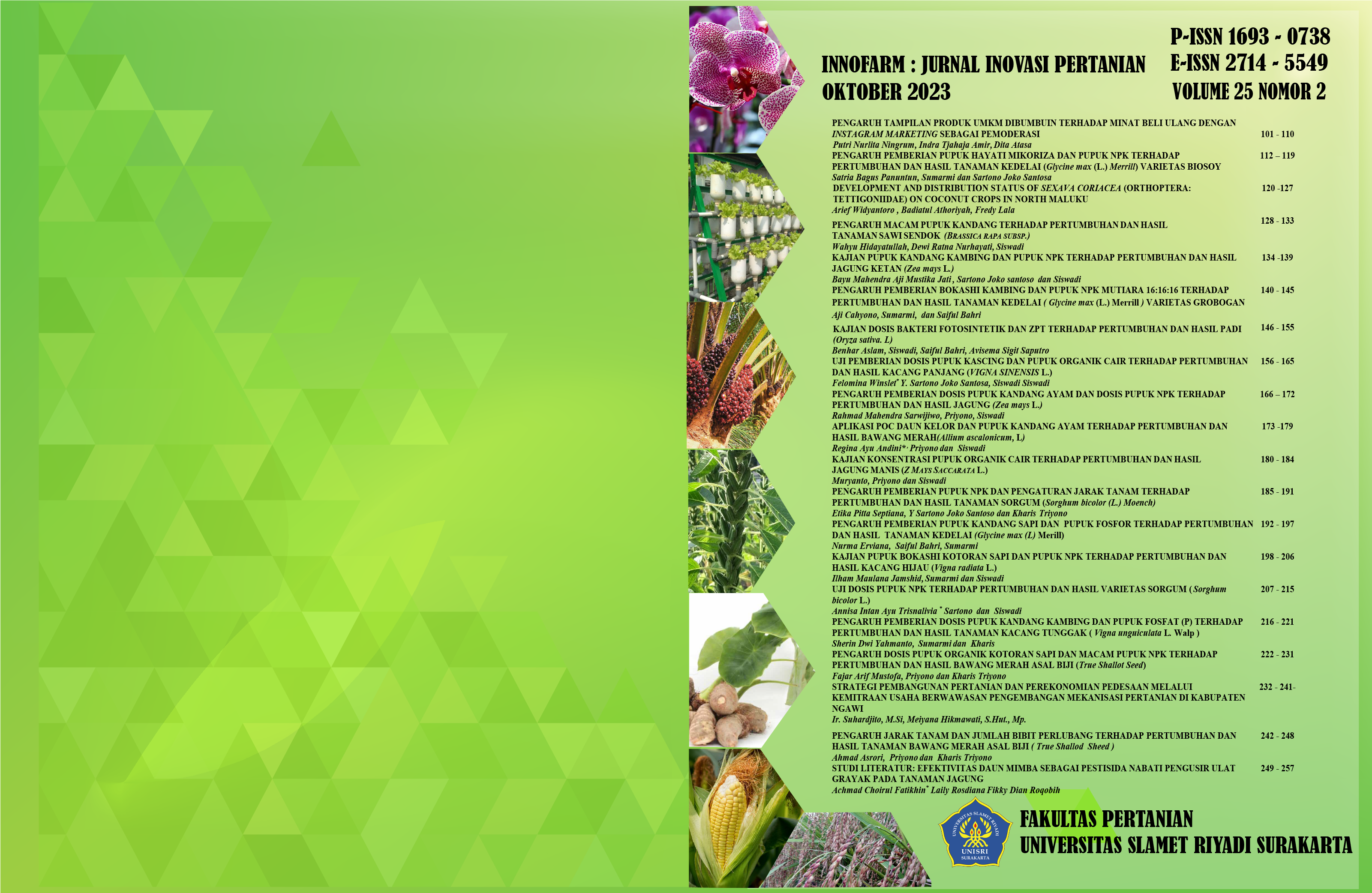Effect of doses of goat manure and phosphate (P) fertilizer on the growth and yield of cowpea (Vigna ungiculata L. Walp)
Cowpea, goat manure, SP 36 fertilizer
DOI:
https://doi.org/10.33061/innofarm.v25i2.9782Abstract
This study entitled The Effect of Goat Manure and Phosphate (P) Fertilizer on the Growth and Yield of Cowpea (Vigna unguiculata L. Walp) to determine the effect of fertilization and phosphorus (p) on the fertility of cowpea (Vigna unguiculata L. Walp) (Vigna unguiculata L. .walp). Cowpea (Vigna unguiculata L Walp.) is a plant that is widely cultivated by humans, especially people in rural areas. Young pods and cowpea seeds are often used as vegetables. Cowpeas have many variations in appearance and are also higher in vitamin B1. The research design used was the RAKL model (complete randomized block design) with 2 factors and was repeated 3 times. The use of goat manure (K) as factor 1 consisted of 4 steps, K0 (control), K1 = 90 grams of goat manure, K2 = 120 grams of goat manure, K3 = 150 grams of goat manure. SP 36 fertilizer as factor 2 consisted of 4 levels, namely P0 (control), P1 = SP 36 fertilizer 1.2 grams, P2 = SP 36 fertilizer 2.4 grams, P3 = SP 36 fertilizer 3.6 grams. Data analysis is used to determine the effectiveness of a treatment using data analysis followed by a follow-up test of BNJ at the 5% level. The results of the study concluded that the treatment of goat manure affected the number of leaves, number of pods, fresh fruit weight, dry fruit weight, fruit/tree weight and 100 seed weight with the best ratio of 150g/tree. The SP 36 treatment affected the number of fruits, fresh fruit weight, dry fruit weight, fruit/plant weight and 100 seed weight with the best ratio of 3.6 g/tree
Downloads
Published
Issue
Section
License
Copyright (c) 2023 Sherin Dwi Yahmanto, Sumarmi Sumarmi, Kharis Triyono

This work is licensed under a Creative Commons Attribution-NonCommercial 4.0 International License.
Authors who publish this journal agree to the following terms:
- Authors retain copyright and grant the journal right of first publication with the work simultaneously licensed under a Creative Commons Attribution License that allows others to share the work with an acknowledgement of the work's authorship and initial publication in this journal.
- Authors can separately make additional contractual arrangements for non-exclusive distribution published by the journal (e.g., publish it in a book), with an acknowledgement of its initial publication in this journal.
- Authors are allowed and encouraged to send their work via online (e.g., in the institutional repositories or their website) after published by the journal.















